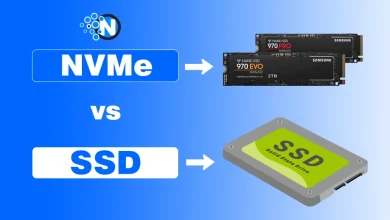How To Build A Custom eCommerce Platform Successfully

There are several basic steps to help you build a successful eCommerce software platform. Nowadays, the easiest way to display, advertise, and sell goods is through online eCommerce applications. Many businesses already distribute their products through online shopping channels like Amazon and eBay. Of course, more tech organizations are looking into the benefits of developing custom-build solutions to support their eCommerce operations. As a software engineer yourself, you should thoroughly understand how to design, develop, deploy, and distribute your own application. This way, you can maximize your earning potential, unleash your creativity, and establish brand recognition. Plus, you’ll be able to drive organic traffic to your store. To help you get started, read on to learn how to build a successful eCommerce platform in a few basic steps.
Formulate Your Strategy
First off, start with your eCommerce software development strategy. Focus on the greatest needs, challenges, and obstacles you will encounter throughout your SDLC. Think about how long it will take you to finalize development and start distributing your software. You also want to think about the bandwidth, delivery options, and functionalities you’ll need. Once you have done so, you can start breaking up the deliverables, prioritizing different features, and focusing on shopper experiences. You may also want to drill down on the project scope and layout the right foundation. When setting your deadline, you also need to expect mistakes and challenges throughout the process. Definitely, strategy formulation is key to building a successful eCommerce software platform from scratch.
Integrate Your Tech Stack
Next, integrate your tech stack for successful eCommerce software development. There are several development tools, programming resources, and supporting technologies to help you construct your online shopping application. For a start, you should use a sophisticated tool for DevOps pipeline automation and optimization. This advanced solution enables you to effectively build, test, and deploy software as part of your continuous integration and deployment (CI/CD) pipeline. Also, it provides the end-to-end orchestration functionality to optimize key areas of your DevOps processes. Absolutely, integrate your tech stack to build a successful eCommerce platform.
Set Up Payment Options
Since shoppers will need to make purchases online, you need to set up secure payment options for your eCommerce software platform. There are several ways you can process payments online. Commonly, online stores try to seamlessly process credit and debit cards online. You can also process eCheck payments through Automated Clearing House (ACH) systems. This allows customers to enter data from paper checks into a secure software interface. You can also look into integrating an online payment gateway, which continues to grow in popularity. Other notable options include click-to-play email invoicing, processing mobile payments, as well as recurring billing. Surely, set up payment options to build a successful eCommerce platform.
Implement Security Protocols
Now, you are ready to implement strong security protocols for your eCommerce software platform. Your application must be capable of protecting sensitive shopper data, as well as confidential payment information. Start by patching any potential bugs, defects, or errors in your eCommerce software system. Of course, many hackers will attempt to exploit outdated functionalities or specific vulnerabilities. You should also train and educate your customers on how to protect their information when shopping online. In the event of a data breach, you must have a detailed incident response policy in place. This is essential to minimize downtime, inspire stakeholder confidence, and maintain trust with your users. Plus, a solid IR plan will help you remain in compliance. Certainly, implement security protocols to protect your successful eCommerce platform.
Customize Your Platform
At this point, it is time to customize your eCommerce software platform. Once you have your software’s foundation and supporting architecture configured, there are several additional elements to start integrating. For a start, add high-quality product photos, detailed descriptions, as well as in-depth data. Using product variation swatches also provides a much nicer display. This includes everything like different varieties, sizes, colors, and options. With these steps taken, you can additionally start working on product stock-keeping units (SKUs), pricing structures, and inventory levels. Indeed, customize your platform to build a successful eCommerce platform from scratch.
There are several key steps to building a successful eCommerce software application. First off, formulate your strategy for eCommerce software development. Next, integrate your tech stack with the latest tools, resources, and technologies. Then, set up secure payment options to start accepting credit and debit cards for your platform. Now, you are ready to implement high-level security protocols. At this point, it is time to construct your eCommerce software. Follow the points highlighted above to learn how to build a successful eCommerce platform in a few basic steps.




